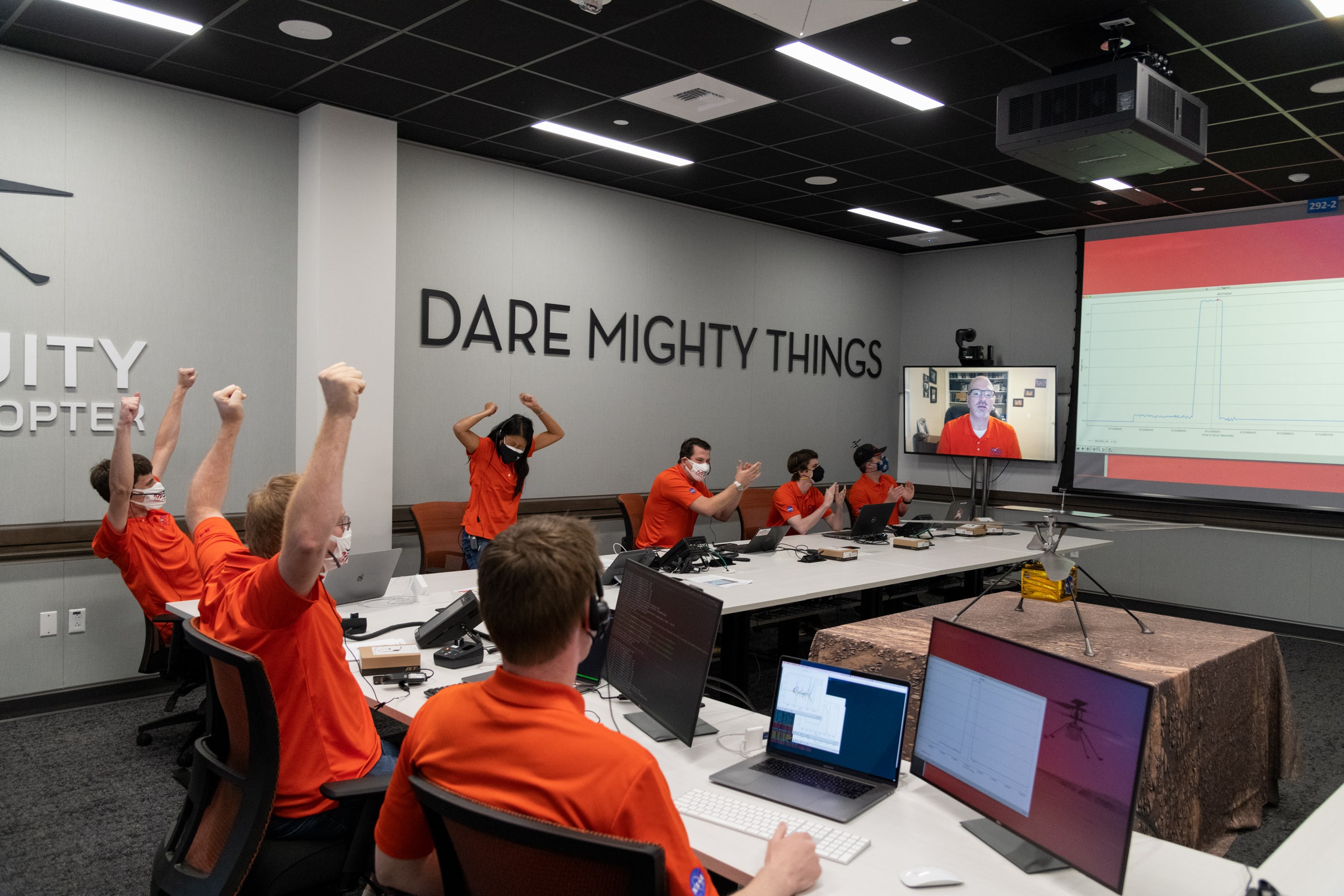NASA's Ingenuity helicopter achieves the first flight on another planet
30 seconds of flight on Mars is a universe-wide first
NASA/JPL-Caltech
Only about a century after the first powered flight on Earth, we’ve already managed to fly the first powered aircraft on another planet.
Early this morning (mid-day Martian time), NASA’s Ingenuity helicopter successfully completed its first flight on Mars. The Perseverance rover, which carried the helicopter to its launch site, watched from afar on the Van Zyl Overlook and captured photos of the historic moment. Its first test flight today lasted 30 seconds, with the helicopter hovering about 10 feet off the ground. (For comparison, the Wright brothers’ first flight was only 12 seconds, and they were testing on a much more hospitable planet.)
Although this still might seem like a short flight, it’s truly incredible given how much more difficult it is to fly in Martian air. In order to fly a helicopter or an airplane, we need lift — a force moving the aircraft upwards. The problem with Mars is that with its thinner atmosphere, we need a lot more power to move enough air and generate the necessary lift. For this reason, Ingenuity is very light (less than four pounds), so it needs less force to get it off the ground. Its blades are also capable of spinning at over 2,500 revolutions per minute (a whopping 5 times faster than helicopter blades on Earth have to spin).

Ingenuity helicopter on the ground vs. in the air as seen by the Perseverance rover
NASA Perseverance/Ingenuity
Ingenuity is a “technology demonstration” — a project meant to prove we can do something, paving the way for future science missions. It tagged along with the Perseverance rover, which will leave the helicopter behind when the test flights are over. Since Ingenuity wasn’t the main mission, it was allowed to be more risky — no matter what happened, it would teach engineers valuable lessons about what to try next time. Before Perseverance resumes its primary science mission, the NASA team will try more and more ambitious flights, up to 90 seconds and 980 feet. As MiMi Aung, Ingenuity’s Project Manager, excitedly said today, “We really want to push the rotor craft flights to the limit!”

NASA Ingenuity team celebrating the helicopter's successful flight
NASA Perseverance/Ingenuity
Despite some delays leading up to today’s momentous flight, NASA scientists report the helicopter is healthy, working, and ready for more. There’s definitely a lot to look forward to in the coming weeks as Ingenuity paves the way for a new kind of spaceflight!